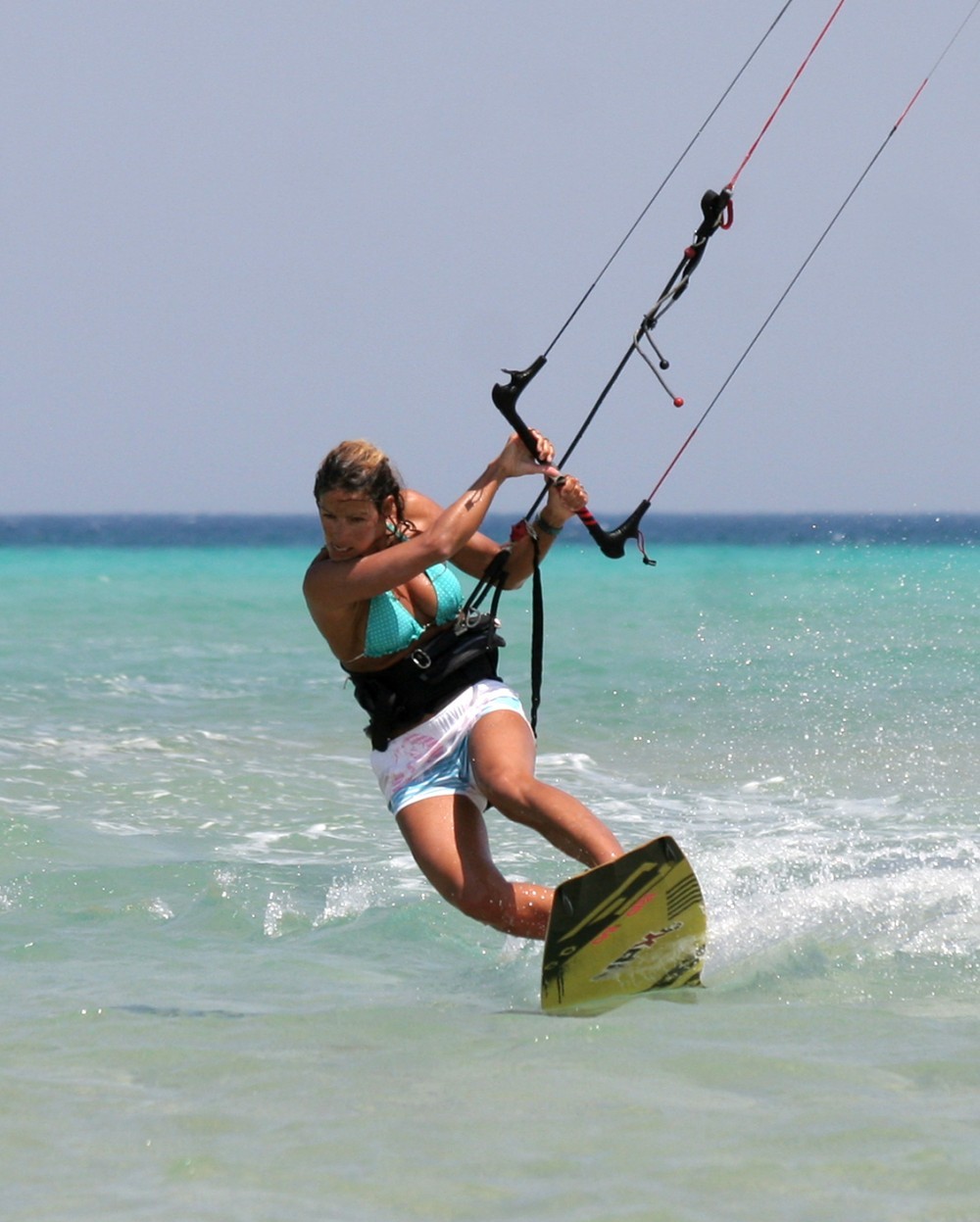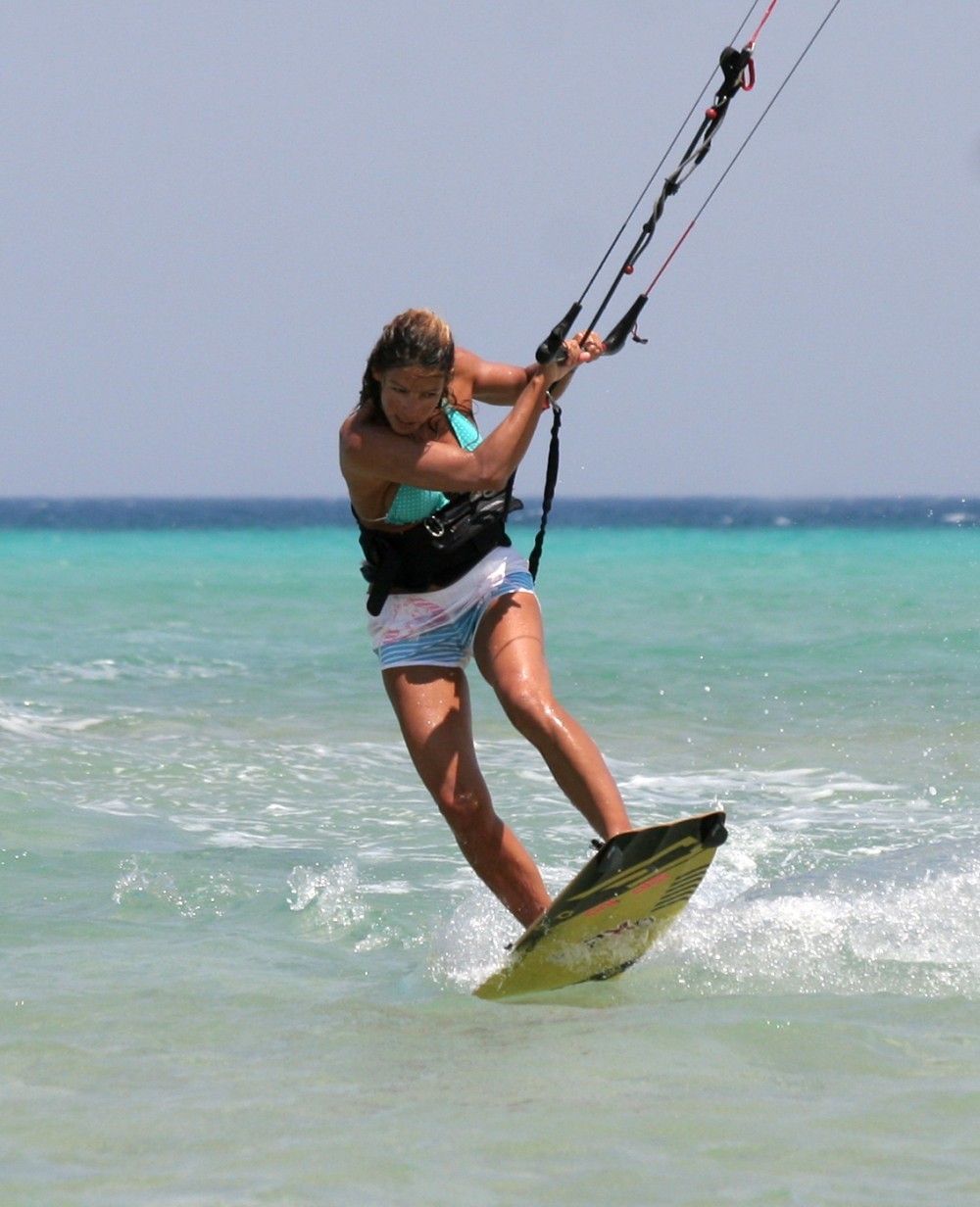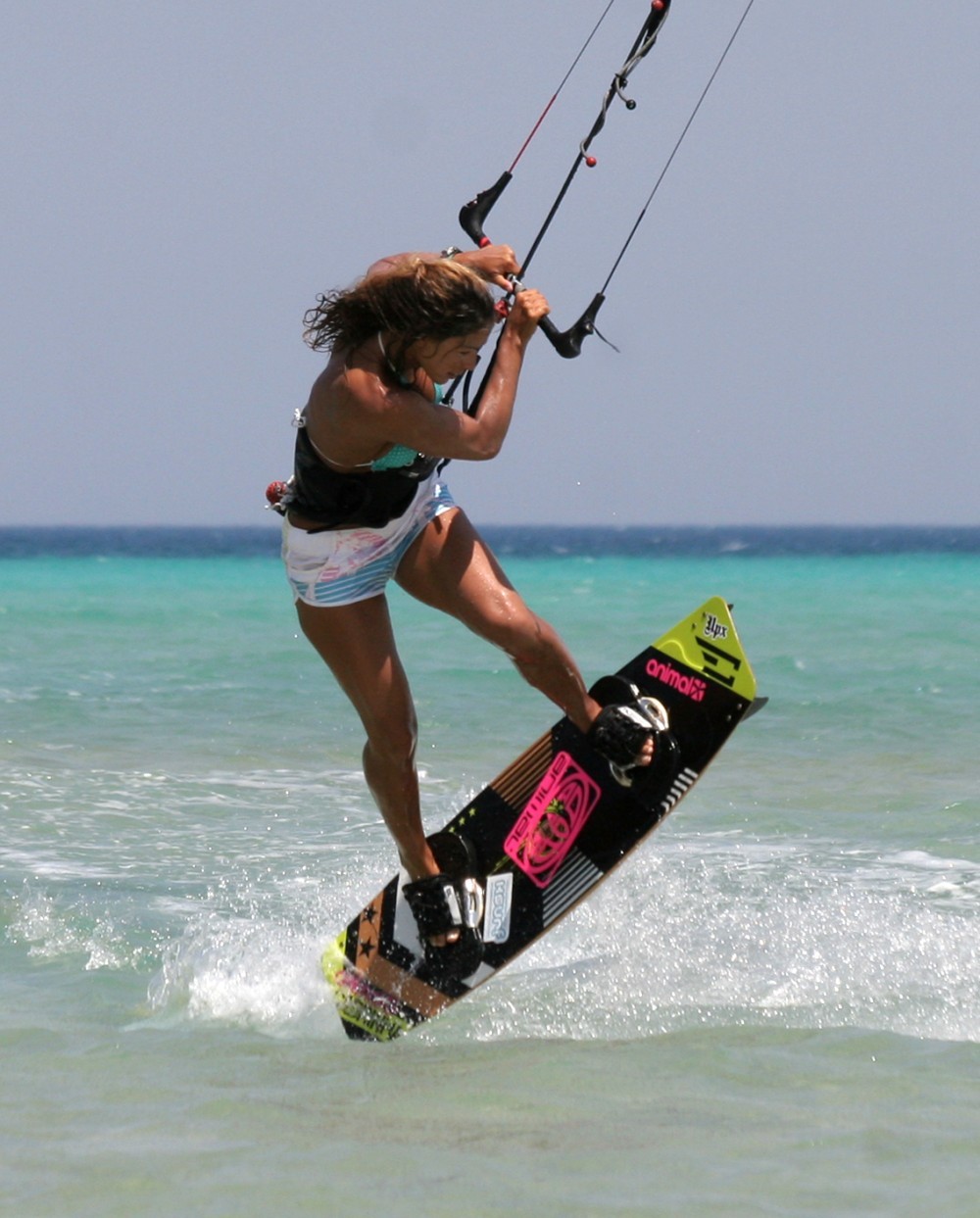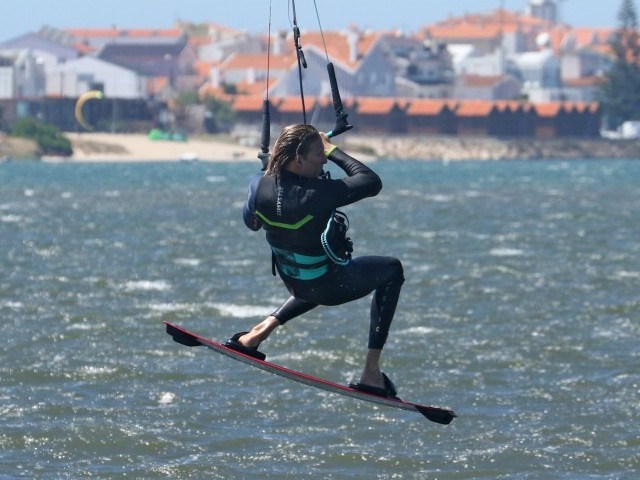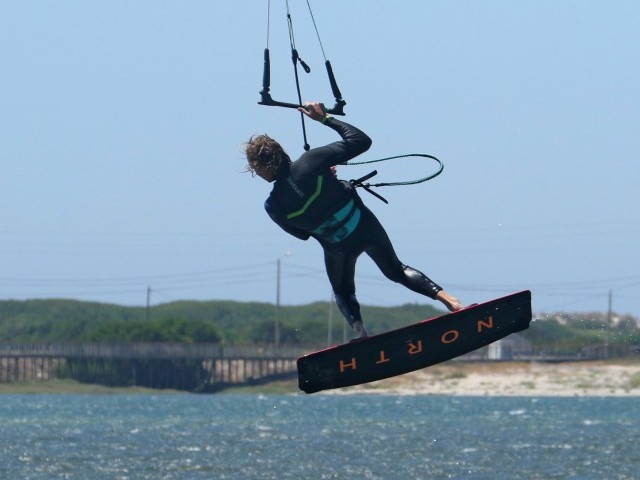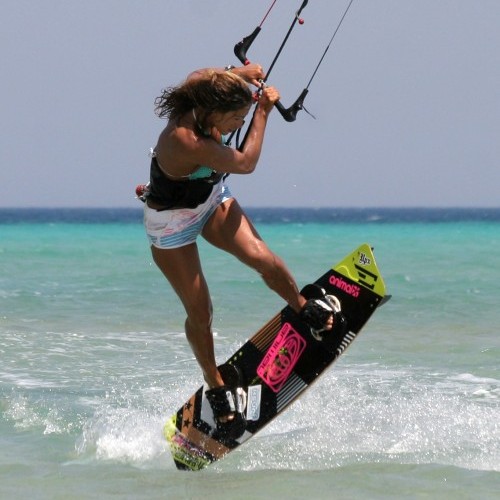
Front Loop From Toeside
Technique / Intermediate
Introduction
The front loop from toe side is an extra bit of fun for anyone who fancies themselves as proficient on their toes. It’s a very achievable move and can lead into a plethora of other tricks and combos, both hooked and unhooked, so a must have for any budding crowd pleasers amongst you. It goes without saying that apart from a solid toeside an understanding of the front loop does help, even if you execute it on a the opposite tack. That said, as you start from your toes you will find that the kite does a lot of the work for you when it comes to spinning so as long as you get the take off and keep control of the kite the planets could well be aligning!
So let us peruse the approach and take off to increase your chances.
In Pic A. Karine is edging against her kite, which is on its way up. Not wanting to draw too much attention to it but this is another classic kite face move. If you thought edging upwind required some effort, now that you’ll be edging upwind and trying to keep your weight low against the lift of the kite, you’ll need to use all your steel.
For starters trim your bar down towards you. With the bar nearer your body you’ll be able to edge well with both hands on the bar, and thus you’ll be able to send the kite and keep control of it. Even though Karine’s bar is angled back to send the kite her front arm is still slightly bent, so the kite does not pull her around. You can see how Karine has her neck twisted and face really looking over her shoulder and down. This allows her to commit against the kite and keep her body weight low and forward, whilst still keeping both hands on the bar. This way she’ll be able to hold her edge for that little bit longer. Just like with a heel side jump move, if Karine has a cheeky peek at the kite she’ll come off her edge.
Pic B. demonstrates the take off perfectly. Karine has popped up off the water as she felt the kite start to lift her. Even though you use the kite for this trick, you need to “go early” because you will not be able to resist the same way that you do on your heels. Even though Karine is extending up, she has kept her head down and twisted around, continuing to commit her weight upwind of the board against the pull of the kite. It is tempting to drift the kite up slowly, but if you are fairly aggressive you have more chance of holding your edge until the right time, as it wont be as long. This is your chance to give yourself enough height to complete the move.
Also as Karine starts to take off she already levels the bar off. This is due to her popping up early. As she essentially looses her edge as she pops up, the kite will fly further back as she pendulums underneath it unless she immediately redirects the kite forwards. Once again this is only possible because she has the bar trimmed in near her.
Pic C. The final part of Karine’s take off is the initiation of her forward rotation. Just as with a heel side front loop, much of the momentum comes from the back leg kicking off the water, and as Karine popped off her back leg that will help. If you look at Karine’s head she is no longer looking upwind over her shoulder. By turning her head to look forward and downwind her body will automatically start to uncoil, and this is further helped by the kite pulling on the harness hook.
From here onwards its all about keeping the bar in, the kite forward and getting your body tucked up and small so that you can look over your back shoulder and complete the rotation.
Following Sequence 1
- Pics 1& 2. With her kite at 1 o’clock and riding with good speed on her toes, Karine edges hard and sends her kite back for a jump whilst trying too look upwind.
- Pic 3. As the kite starts to lift her Karine explodes up off her back leg whilst still committing her weight upwind of the board.
- Pic 4. As she kicks off Karine turns her head to look downwind under the bar. At this point Karine is already redirecting the kite forward with her front hand.
- Pic 5. This impulse coupled with the kite pulling on the harness throws Karine into a front rotation. You can see how Karine is pulling hard on her front hand.
- Pic 6. This looks familiar. Karine is now facing upwind and it looks exactly like a normal front loop. She has the bar pulled in to keep tension on the lines, she is looking over her back (left) shoulder to continue rotating and she has her knees pulled up to increase the speed of rotation.
- Pic 7& 8. Karine keeps looking over her shoulder (or under her armpit) in an effort to sea the water where she will land.
- Pic 9. As Karine completes her rotation she dives the kite hard with her front hand and focuses on her landing.
- Pic 10. The diving kite pulls Karine off downwind and stops her rotating. Now she can drop her feet ready for landing.
- Pic 11. Karine lands tail first with her board pointing downwind for a clean landing. From here she can then gather her thoughts before carving back onto her edge and unspinning her bar.
Common Problems
It is very easy to get stuck on the water. By this we mean that when you concentrate on sending the kite back for the jump it is quite natural not to edge hard, which results in nothing much as you drift downwind under the kite.
The solution is to be aggressive with the kite even if it’s just a quick flick, and then really throw yourself into the rotation. If you wait for something to happen it wont. You have to pre-empt this move, so anticipate the lift in the kite and be ready to spring.
Another common problem is to pre-empt too much. This way you will not be using the kite and although you will complete the rotation, chances are you’ll land flat on your butt. You need the kite to give you the height. Put it this way, to complete a popped front loop from heel side without the kite requires a lot of pop and practice. To get the same pop from your toes requires even more oomph and time – so use the kite.
Finally, if you’re having trouble edging hard on your toes whilst holding on with both hands, try trimming the bar down towards you. If this still doesn’t help, try loosening your harness. This will be more challenging if you wear a seat harness – but still very achievable.
Keystones
- Trim your kite to get the bar close.
- Edge hard by turning your head upwind.
- Send the kite (don’t drift it).
- Pop early and turn your head the opposite way.
- Redirect with meaning
This technique article was in Issue 23 of IKSURFMAG.
Related
By Christian and Karine
Christian and Karine have been working together as a coaching team, running improver to advanced kitesurfing clinics since 2003.







